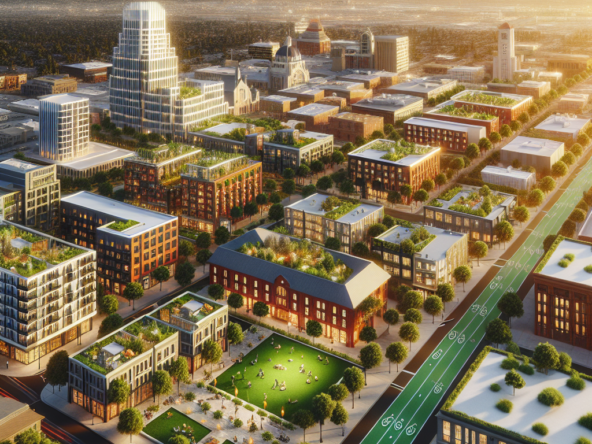Struggling Medical Office at Campus Commons Seeks Bankruptcy Protection Before Foreclosure
In a concerning turn of events for local healthcare infrastructure, the owner of a medical office building situated near Campus Commons has taken the significant step of filing for bankruptcy protection just days before a looming foreclosure. This move signals not only the owner’s attempts to restructure financial obligations but also reflects broader economic challenges facing commercial real estate, particularly in the health sector.
The Campus Commons area, known for its pivotal role in providing essential medical services to the community, suddenly finds itself in a precarious position. The medical office building, which has housed various healthcare practitioners, has faced financial hurdles that ultimately led to this drastic decision. As the pressure of looming foreclosure became more imminent, the owner sought legal safeguards to navigate these tumultuous waters.
The filing for bankruptcy protection under Chapter 11 aims to provide the owner an opportunity to reorganize and stabilize the property, potentially preserving jobs and medical services that the community relies upon. This type of bankruptcy is often pursued by business owners looking to restructure their debts while still maintaining control over their operations. It allows for the possibility of strategic plans to revitalize the asset with an eye toward future viability.
However, the circumstances leading to such drastic measures are multifaceted. Factors contributing to the financial instability of medical office buildings often include shifting healthcare models, unexpected costs related to property maintenance, and changes in tenant occupancy rates. Additionally, the economic aftermath of the pandemic has led many medical practices to reevaluate their operational expenses. The resulting adjustments have a direct impact on the commercial space these practices occupy.
The outcome of this bankruptcy filing remains uncertain, but it does shine a light on the resilience of the healthcare real estate market overall. While some buildings have succumbed to the pressures of foreclosure, others are adapting by embracing innovative leasing structures or transitioning to hybrid medical models that accommodate both in-person and telehealth services.
As the situation develops, many in the community are keeping a watchful eye on the next steps the owners of this medical office building will take. The hope is that a restructuring plan will allow the facility to remain operational and continue to provide crucial healthcare services.
Reflections on the Future of Healthcare Real Estate
The plight of this medical office building serves as a reminder of the volatile landscape of commercial real estate, particularly within the healthcare sector. As hospitalized and outpatient clinics evolve, so too must the infrastructures that support them. The innovative application of technology, changes in patient engagement practices, and the integration of telehealth have transformed how healthcare services are delivered.
Navigating financial instability is never easy, especially within a community that relies heavily on accessible medical facilities. As we watch this unfolding story, it encourages a broader dialogue about the future of healthcare infrastructure. Simply put, adapting to the modern realities of healthcare is essential for survival.
In closing, if this medical office can weather the storm of bankruptcy and emerge on the other side with a viable plan, it might just pave the way for others facing similar challenges. After all, this scramble to adapt could lead to a thriving new standard of healthcare services that ultimately benefits everyone.
Hot Take: Here’s hoping this owner finds not just relief from foreclosure, but also a path to better health—financial and physical—for the medical services that the community holds dear. Remember, even in bankruptcy, there’s room for healing!
Source: https://www.bizjournals.com/sacramento/news/2025/11/14/medical-office-campus-commons-bankruptcy.html




